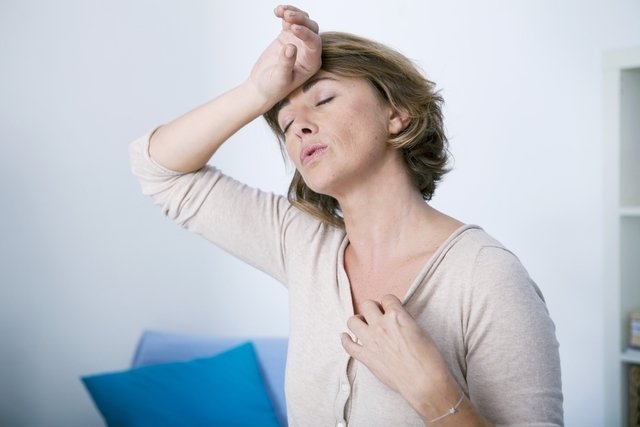A hot flash is described as a heat wave that is felt throughout the body, but particularly felt on the face, neck and chest. They can be accompanied by periods of intense sweating. Hot flashes are very common at the start of menopause, however there are other conditions that can also trigger hot flashes, like andopause, during treatment for a medical illness, or with diseases like hyperthyroidism or hypogonadism. Some women also experience hot flashes during pregnancy.
Characteristic symptoms of hot flashes include a very sudden feeling of heat spreading throughout the body, the emergence of redness or rashes on the skin, increased heart rate, intense sweating, and a feeling of chills or coldness when the hot flash is over.
It is not fully understood what causes heat waves, but it is known that they may be related to hormonal changes and body temperature control in the hypothalamus, which is an area of the brain that is very sensitive to hormones.

The most common causes of hot flashes are:
1. Menopause
Hot flashes are one of the most common symptoms of menopause, and occur due to hormonal changes within the body that occur at this time. Hot flashes can emerge a few months before a woman fully enters menopause, and can appear very suddenly at different points of the day. This symptom tends to vary in intensity from woman to woman.
What to do: Treatment depends on the intensity of symptoms and should be directed by a gynecologist. He or she may recommend hormone replacement therapy or prescribe medications, supplements or diet changes that help to manage these symptoms.
2. Andropause
The most common symptpoms of andropause and sudden changes in mood, fatigue, hot flashes and decreased sexual drive and performance. It occurs due to reduced production of testosterone, which can occur at around 50 years of age.
What to do: Generally, treatment consists of using oral or injectable medications that increase testosterone levels. These should only be used as prescribed by a urologist or endocrinologist.
3. History of breast cancer
Women who have had breast cancer, or have undergone chemotherapy treatment that has affected an ovary, may experience hot flashes or other symptoms similar to menopause.
What to do: In these cases, hormone replacement therapy is not recommended. Patients should speak to the doctor about alternative therapies or natural options to relieve symptoms.
4. Ovary removal
Surgical removal of the ovaries may be medically necessary in the presence of ovarian abscesses, cancer, endometriosis or ovarian cysts. Removal can induce early menopause due to decreased hormone production in the ovaries, which can cause symptoms like hot flashes
What to do: Treatment depends on the woman’s age, and may include hormone replacement therapy.
5. Medication side effects
Some medications, particularly those that inhibit the release of hormones, can cause hot flashes. This can be seen in leuprolide acetate, which is the main ingredient in Lupron, a medication used from the treatment of prostate cancer, myomas, endometriosis, early puberty and advanced breast cancer. This medication decreases the production of gonadotropin hormones by blocking its formation in the ovaries and testicles.
What to do: Generally, symptoms disappear when the medication is discontinued, however stopping a medication should first be discussed with the prescriber.
6. Prostate cancer therapy
Androgen suppression therapy is utilized as a treatment approach for prostate cancer. This therapy reduces testosterone and dihydrotestosterone levels in the body, which can lead to hot flashes as a possible side effect.
What to do: Generally, symptoms disappear once the therapy is discontinued. This should be discussed with the prescribing doctor first.
7. Hypogonadism
Male hypogonadism occurs when the testicles produce little to no testosterone, leading to symptoms like impotence, abnormal development through puberty and hot flashes. Female hypogonadism occurs when the ovaries produce little to no sex hormones, like estrogen and progesterone.
What to do: This condition is not curable, but symptoms can be well-managed through hormone replacement therapy.
8. Hyperthyroidism
Hyperthyroidism is characterized by an excessive production of thyroid hormones, which can lead to immune system changes, inflammation, or nodules in the thyroid. This condition causes symptoms like anxiety, nervousness, palpitations, hot flashes, tremors, excessive sweating or frequent fatigue.
Read more about thyroid symptoms and how to recognize them.
What to do: Treatment depends on the underlying cause of this condition, the patient’s age and the presenting symptoms. It may involve medications, radioactive iodine, or surgical removal of the thyroid.
